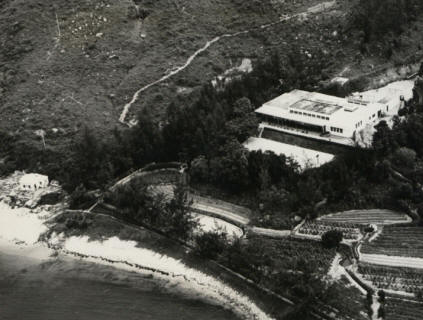History of Lantau
At Tung Chung a fort was constructed sometime in the 12th Century to control smuggling from the area, it was garrisoned with several hundred imperial troops, some of whom were later transferred to the Kowloon Walled City.

It was in the 13th century during the Southern Song Dynasty of China that Lantau perhaps had its first appearance and Chinese Court History when it served as a refuge for the fleeing boy Emporer Duānzōng in 1278. Together with his brother, who later succeeded him and was enthroned as Emperor of All China at a ceremony at what is now Silvermine Bay, he lived on Lantau.
Not until hundreds of years later did such a major event happen when the first Portuguese traders established a trading camp on Lantau and at one time has a base at the present Tai O village as well as on the mainland at Tuen Mun. These were abandoned after the Sino-Portuguese wars of 1521 and 1522.
A temple was built in 1699 at Tai O to venerate Yeung Leung-jit, a valiant member of the court of the Southern Song Dynasty who support the boy emperors when they lived on Lantau. This temple can still be seen at Tai O as it has been maintained and renovated and is now known as Hau Wong Temple.
In 1729 at the most south westerly tip of the island a fort was constructed defend against attacks from the sea, the ruins of this fort are still here and while investigating them Neolithic remains have also been found. The area was still actively inhabited up until at least 1820 when a Tin Hau temple was constructed near the fort.
Through the 19th century the area became more and more wild and pirates such as the famed Cheung Po Tsai were more powerful in the area than the imperial navy. With bases on Lantau and neighboring Cheung Chau they effectively became local warlords, but were eventually co-opted into the imperial navy. During this time they took over imperial installations including the fort at Tung Chung.
Around 1906 the Po Lin Monastery was founded, though it was not until 1924 that it gained this name, before that it was simply the "big hut" where monks retreated for meditation. Both male monks and female nuns resided here before in 1918 three of the nuns established a separate nunnery at Lower Keung Hill.
In modern times the rural nature of Lantau made it a perfect hideout for the anti-Japanese Resistance during World War II.
As regular ferry services were established between Hong Kong island and Lantau, particularly to Silvermine Bay or Mui Wo, the island became popular as a get-away from the city. In 1960s the Silvermine Bay Holiday Camp (pictured) was established as a place for poor children living in cramped public housing to have a chance to enjoy the outside air and have a holiday.
Selected as the location for the new Hong Kong International Airport, opened in 1998, Lantau was given massive development aid and infrastructure.
With the opening in 2005 of the Hong Kong Disneyland the island really became one of the top tourist destinations within Hong Kong.


